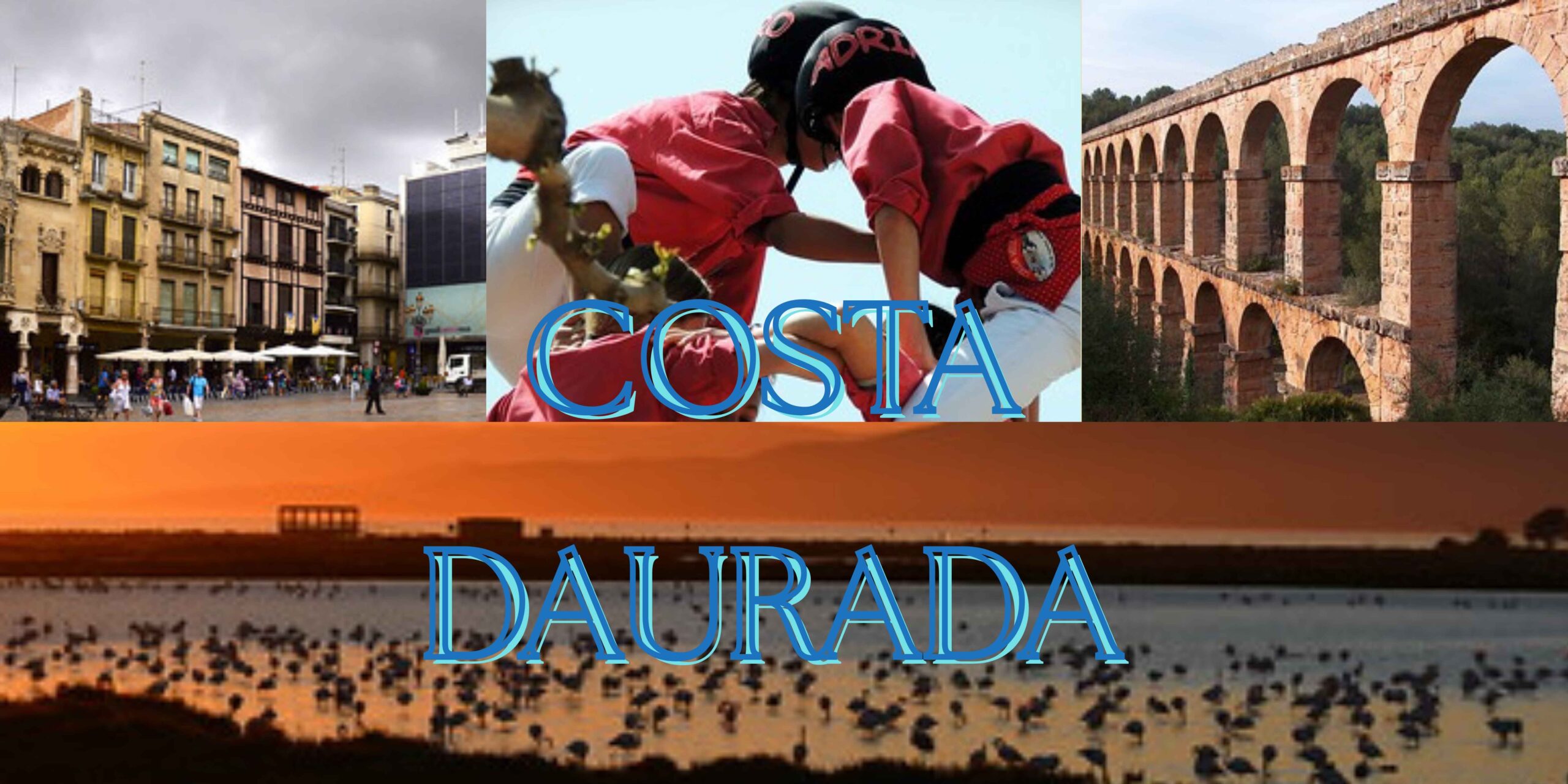What to Visit on the Costa Dorada in 2025
The Costa Dorada (in Catalan, Costa Daurada) is the tourist name given to the coastline located in the province of Tarragona, stretching from the mouth of the Foix River to the Delta of the Ebro. The Costa Dorada offers locations with crystal-clear beaches, historical monuments, and dreamlike landscapes. In this article, we will show you what to visit in the Costa Dorada.
If you don’t have accommodation in the Costa Dorada, book at our Hotels in Cambrils.
What to Visit on the Costa Dorada in 2025
Tarragona
Tarraco is a UNESCO World Heritage City, filled with Roman architecture where history comes alive beyond the pages of books and is reflected in the streets. What to visit?
-
Tarragona Cathedral
-
Roman Amphitheatre
-
Aqueduct of les Ferreres (also known as the Devil’s Bridge)
-
Mediterranean Balcony
-
Roman and Paleochristian Necropolis
-
Tarragona City Walls
-
National Archaeological Museum of Tarragona
-
Roman Pretorium and Circus
-
Roman Forum
-
On August 19th… enjoy the Diada Castellera of San Magí
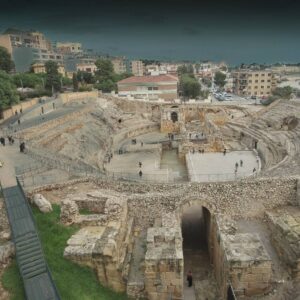
Salou
If you’re unsure of what to visit on the Costa Dorada, we recommend Salou, one of the main tourist cities in the area, with a rich historical, cultural, and social heritage. The city, founded by the Greeks in the 6th century, became famous due to its fishing port, which reached its peak during the Medieval and Modern Ages. What to do in Salou?
-
PortAventura and Ferrari Land Salou
-
Bosque Aventura Salou: A vertical forest designed for outdoor fun for children, where they can enjoy exciting adventures with zip lines, climbing walls, paintball, all adapted to various difficulty levels.
-
Beaches and Coves
-
Visit La Torre Vella: An ancient defensive tower built in 1530 to protect the citizens from pirate and corsair attacks that plagued the coast.
-
Stroll along the Jaime I Seafront Promenade: A charming 2 km-long promenade lined with giant palm trees, restaurants, playgrounds, fountains to cool off on hot days, and modernist houses.
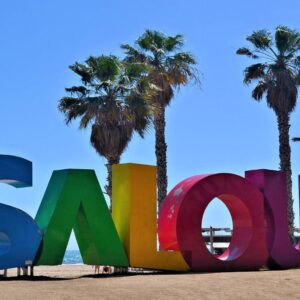
Castell de Miravet
The Castle of Miravet has witnessed significant historical events. Its earliest traces date back to an Iberian settlement from the 2nd century BC. Later, in the 11th century, the Moors built an Andalusian fortress, which was later renovated to defend against the Catalan counts. In 1153, the castle was conquered by the Christians and handed over to the Knights Templar, who transformed it into a Templar fortress.
In 1307, King Jaume II ordered the arrest of the Templars, who resisted until 1308. The castle then passed to the Order of St. John, which controlled it until the 19th century. During this period, the castle was involved in conflicts such as the War of the Reapers (1640-1652), the War of Spanish Succession (1707), and the Carlist Wars (19th century).
In 1835, the castle ceased to be a feudal property and was sold to private owners. In the 20th century, it played a role in the Spanish Civil War (1938), being occupied by both Francoist and Republican forces. Finally, in 1990, it was donated to the Generalitat of Catalonia, restored, and opened to the public in 1994 as a Cultural Heritage of National Interest.
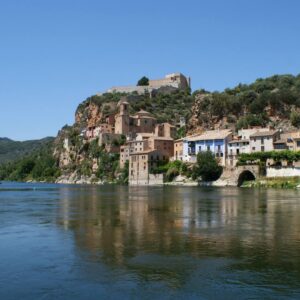
Pont del Diable
The Aqueduct of les Ferreres, also known as the Devil’s Bridge (Puente del Diablo), supplied water from the Francolí River to the city of Tarraco (Tarragona) over a distance of 25 km. It is located on the outskirts of the city of Tarragona and has been designated a UNESCO World Heritage site due to its exceptional preservation, making it one of the best-preserved Roman monuments.
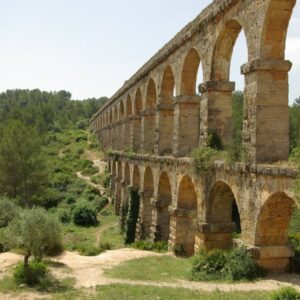
Delta del Ebre
The Ebro Delta is the most important aquatic habitat in the Western Mediterranean and the wettest region in Catalonia, covering an area of 320 km². The landscape of the Delta is unique, offering beaches, rice fields, and habitats for thousands of birds, such as flamingos and other migratory and native species. What to do in the Delta?
-
Hiking at Punta del Fangar
-
Boat tour along the Ebro River
-
Visit the mussel farms
-
Birdwatching at the Encanyissada
-
Taste the famous Delta rice
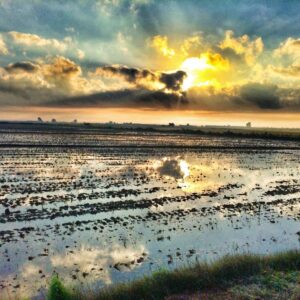
Sant Carles de la Ràpita
If you’re unsure about what to visit on the Costa Dorada, we recommend Sant Carles de la Ràpita. It is a traditional fishing village that has seen the rise of tourism transform the lives of its people in recent decades. What to see in Sant Carles de la Ràpita?
- Ebro Sea Museum
-
Guardiola Viewing Point
-
Fish Market and Fishing Port
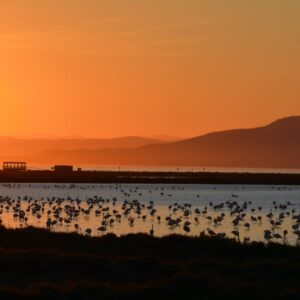
Cambrils
Cambrils, a prominent destination on the Costa Dorada, combines its fishing heritage with a modern tourist approach. With golden beaches, excellent gastronomy, and a rich cultural and natural heritage, it offers an unforgettable experience. Ideal for enjoying the Mediterranean, this charming town invites you to relax, explore its history, and taste the finest Catalan cuisine. What to do in Cambrils?
-
Visit the Samà Park: A botanical garden and zoo in romantic style, covering more than 14 hectares.
-
Stroll through the Fishermen’s Park.
-
Cambrils Port.
-
Vilafortuny: The Vilafortuny Castle is a hidden gem. This historical building, surrounded by gardens, dates back to the 12th century and offers a glimpse into the region’s medieval past.
-
Roman Villa of la Llosa.
-
Bike Route.
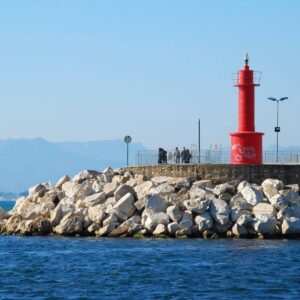
The Sanctuary of Montferri
If you’re unsure about what to visit on the Costa Dorada, we highly recommend the Santuario de la Mare de Déu de Montserrat in Montferri. This monument, designed by modernist architect Josep María Jujol, a disciple of Antoni Gaudí, began construction in November 1925. It is often referred to as the “Little Sagrada Familia” due to its striking resemblance to Gaudí’s famous masterpiece.
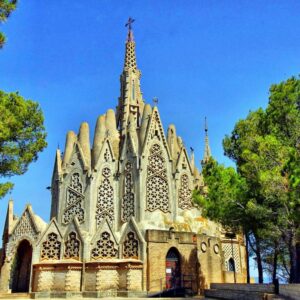
Tortosa
Dominated by the impressive Castle of the Zuda, Tortosa boasts a charming old town that invites you to wander and get lost in its narrow streets. A hidden gem, Tortosa offers a surprising array of attractions best explored on foot. Here’s what you shouldn’t miss in Tortosa:
-
Stroll through its old town
-
Cathedral of Santa Maria
-
Portal of the Jewish quarter.
-
Castle of the Zuda
-
Remains of the 14th-century walls
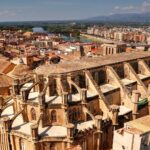
Reus
Known as the capital of Vermouth and the birthplace of Antoni Gaudí, Reus is a city rich in modernist architecture. With over 80 modernist buildings, Reus is a must-visit for architecture enthusiasts. The buildings along the Modernism Route are easily identifiable by plaques located on their facades. Here’s what to see in Reus:
-
Plaça del Mercadal
-
Priory Church of Saint Peter
-
Casa Navàs: One of the finest examples of modernist architecture in Reus
-
Gaudí Centre
-
Pere Mata Institute
-
Vermouth Museum
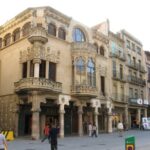
Valls
Valls is renowned for its “calçots” (a type of onion) and the “castells” (human towers) performed by the Xiquets de Valls. The town preserves a medieval atmosphere through its narrow streets in the old town and the remnants of the ancient walls built in the late 14th century. Here’s what to do in Valls:
-
Visit the Monument to the Xiquets de Valls and the Casteller Museum
-
Plaça de l’Oli, Plaça del Blat, and Plaça del Pati
-
Old Town and its Wall
-
Archpriestal Church of St. John Baptist
-
Sanctuary of the Virgin of Lledó
-
Roser Chapel

All Images Provided: Flickr.com

